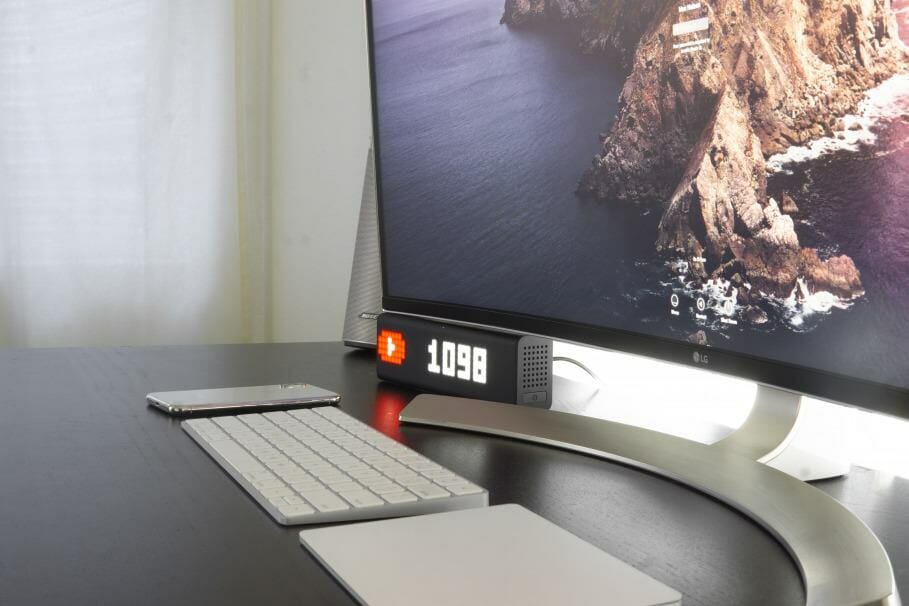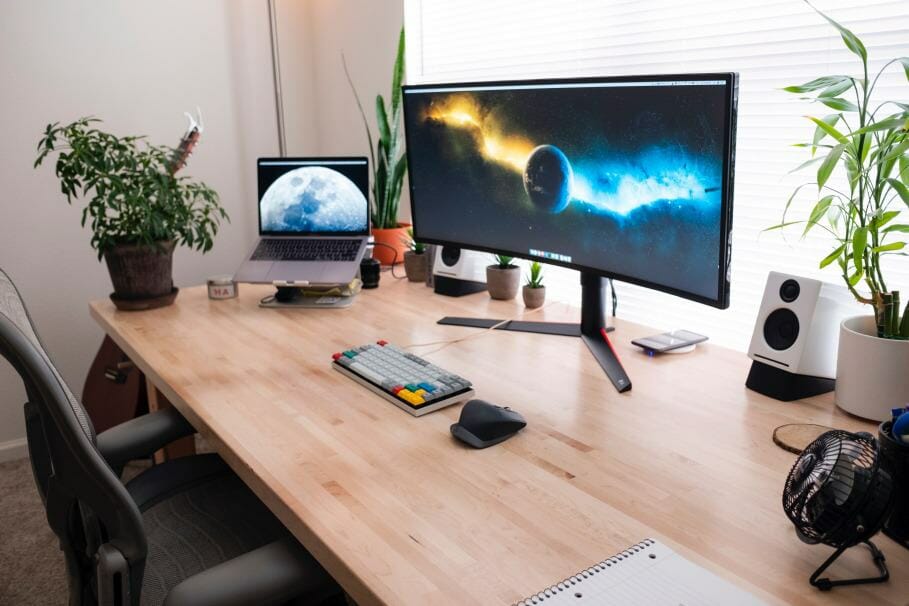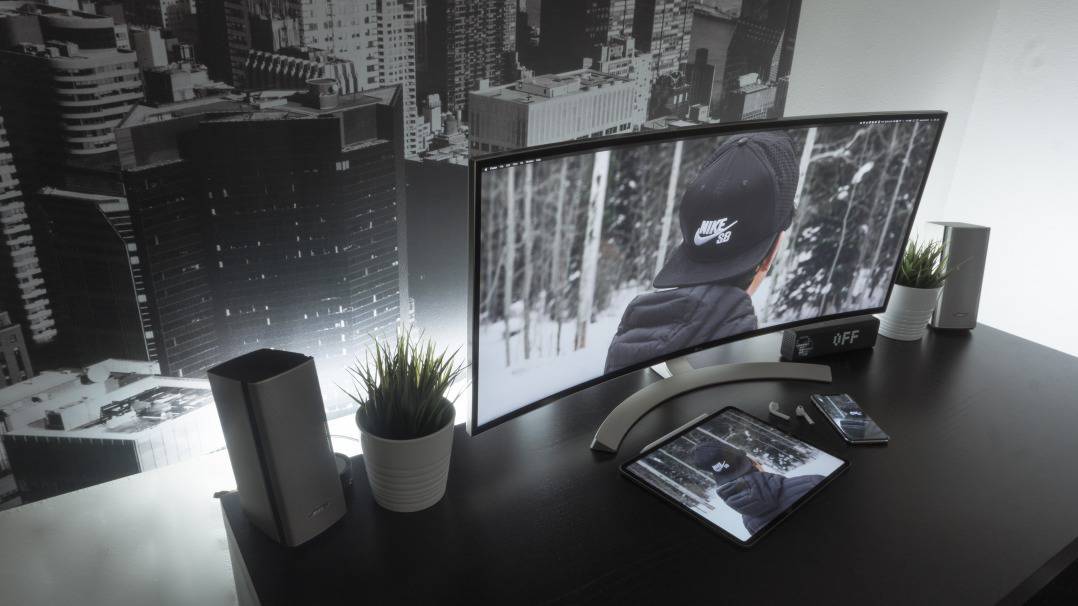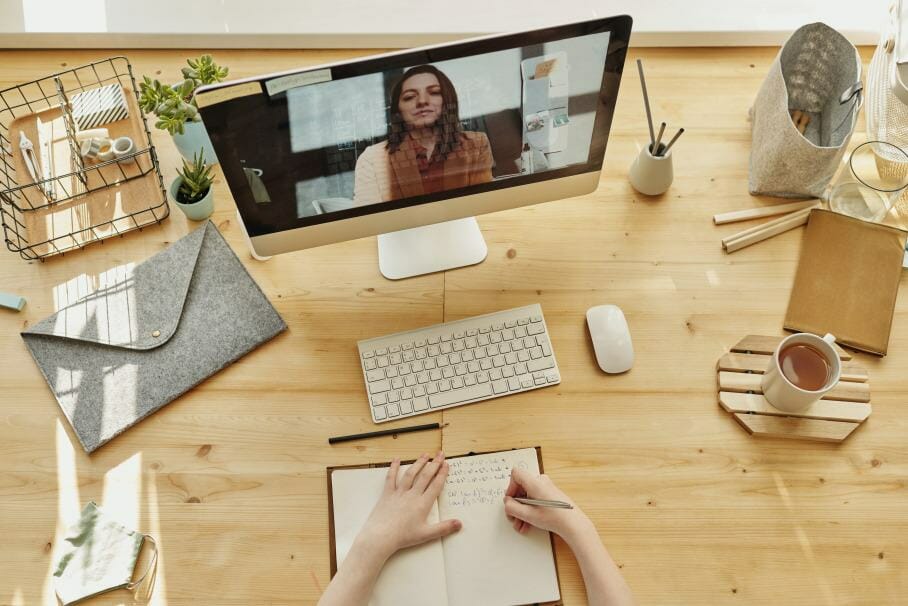When choosing a monitor, one of the decisions you’ll have to make is whether to go for a curved or a flat display. Here are some key differences to consider:
- Viewing angle: Curved monitors offer a wider viewing angle than flat monitors, allowing you to see the screen more clearly from different positions. This is particularly useful for gaming and video watching.
- Immersive experience: The curved design of the monitor can provide a more immersive experience, giving the impression of a larger display and a more natural viewing experience.
- Eye strain: Some users find that curved monitors reduce eye strain and fatigue, as the screen curvature can help to reduce glare and reflections.
- Price: Curved monitors are generally more expensive than flat monitors, so if budget is a concern, a flat monitor may be a better option.
- Purpose: The type of monitor you choose will depend on your intended use. For gaming, a curved monitor can offer a more immersive experience, while for office work, a flat monitor can provide a more practical and cost-effective solution.
In summary, the main difference between curved and flat monitors is the viewing angle and immersive experience. If you’re looking for a more immersive experience, a curved monitor may be the way to go. If you’re on a budget or need a more practical solution, a flat monitor is a good option. Ultimately, your choice will depend on your personal preference and intended use.
Related: Best Monitor For Xbox Series X And Series S – 5 Models And Buying Guide
Table Of Contents
Balancing Sizing with Budget
The most apparent factor we want to look at is the cost of the product. Since flat screens have been in the market for a reasonably long time, you can already find ones in the more affordable range, with the cheapest options costing around $300. On the other hand, Curved monitors are slowly becoming standard in the market, with the most reasonable prices starting around the same price as the former.
Here’s the kicker, though – if you want the full experience a curve monitor can provide, you must purchase one that’s at least 30 inches diagonally. Anything lower than that, and you might as well buy a flat-screen monitor because there’s no difference in the viewing experience.
So how does a 30-inch curved monitor fare compared to a 30-inch flat monitor in terms of price? Curved is a bit more costly, costing around $150 to $200, depending on the brand.
Related: Best Curved Monitor For Office Work
Impact of the Curvature
When checking out curved monitors, you’ll find specs like 4000R, 1800R, 1500R, etc. This is not something you’d find with a flat monitor. This is because the numbers refer to the extent of the curve, specifically the radius of the screen. A small radius means that the curve is more pronounced.
Today, the gold standard is set at 1800R so if you’re buying one, stick to this particular specification. The distinction with a flat-screen monitor becomes essential when considering the distance, you will have between you and the PC screen. If it’s flat, the monitor can be a tad farther away. With a curved display, however, you’d want it a little closer to take full advantage of the benefits.
Impact on Eye Comfort
If you use the PC for long periods, the curved setup will be less taxing on the eyes. This is because the curvature is done to take advantage of the field of view of a person. After all, we don’t have a straight and flat view of the world – humans have a peripheral vision that naturally prompts a curved way of looking at things.
This isn’t just some theory, however. Studies have been done, and the conclusion is that a curved monitor is much more relaxing to the eyes than monitors set up side by side with each other.
Immersive Viewing
This is the main draw of curved monitors. Their position is such that it even engages your peripheral vision. It’s like being closed in a half-moon, giving you a 180-degree view of everything. Gamers who use curved monitors often forget they’re playing on the PC. It’s that realistic – especially when coupled with excellent graphics.
What about Specifications?
The good news is that flat-screen and curved monitors come with modern features. By that, we’re talking about all the typical connections that come with a PC monitor. One significant change between the two would be the aspect ratio. Your standard flat-screen monitor has a 16:9 aspect ratio. The curved, however, is a 21:9, which falls under the ultra-wide category. This is the image you see when movies are filmed using a CinemaScope.
Angle and Positioning
The curvature of a monitor can be tough to place on an office desk. Unless you’ve got lots of space in there, you might have difficulty with the proper positioning. This is especially true if you use multiple monitors in the same area. It’s going to be tough to set them up side by side. Of course, there’s also the obvious issue that a curved monitor would be harder to mount.
Note that because a curved monitor emphasizes mimicking the human eye line, you also need to be particular with how it is placed. It would be best if you were dead center of the monitor so that the curvature effectively spans equal sides of your face.
Glares and Reflections
Flat-screen are more prone to glare, so finding the perfect position in your room or work office is essential. Curved types, on the other hand, are more resistant. The monitor’s curvature effectively shields any glare coming from the sides. Here’s the problem: if the light hits the monitor, it will be undeniable.
Gaming Setup or Work Setup?
Ultimately, the question of whether you should get a flat or a curved monitor is answered by your primary use for it. You can compromise on the price if the monitor is used primarily for work. If all you need it to do is appropriately showcase documents and web pages, then a flat screen would work perfectly – regardless of its size. Some people like curved monitors for work because it makes multitasking easier – and you might find it has the same benefits for you.
Now, things are different if you use the monitor for gaming. Since they mimic the natural eye view of the individual, a curved screen will give you a better gaming experience. But what if you intend to do both using the monitor? If that’s the case, go for the curved model, which should offer you the best of both worlds. It’s going to be a bit pricier, but you’ll be able to enjoy every dollar.
Curved monitors for Mac users
As a Mac user, you know that everything about your computer is designed to be sleek and stylish. So why not complete the look with a curved monitor?
Curved monitors offer several benefits over traditional flat-screen monitors. For one, they provide a wider field of view, which can be helpful when working on design projects or playing video games. They often have higher resolutions than flat-screen monitors, making for sharper visuals. And because they wrap around your line of sight, curved monitors can help reduce eye strain.
If you’re in the market for a new monitor, consider reading my article dedicated to the best-curved monitors for Mac users.
Conclusion
All in all, there’s not much difference between a curved and a flat monitor. The decision depends on what you’ll use it for, and once you’ve determined your priorities, you’re ready to make that purchase.





